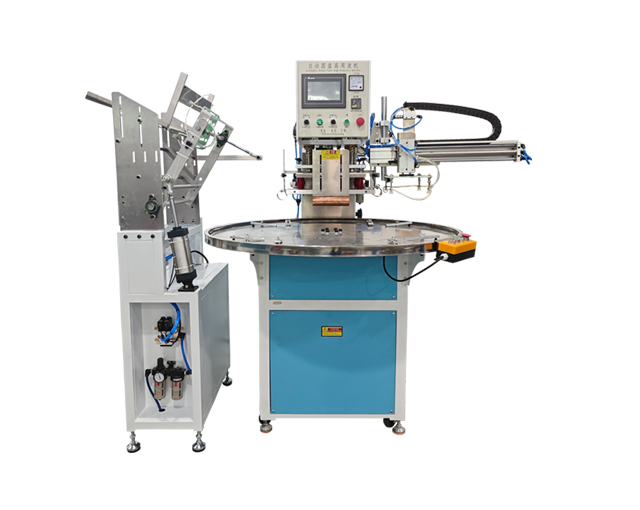Time:2025-07-24 Views:1 source:News

The automation upgrade of high-frequency embossing machines involves integrating advanced control systems, robotic technologies, and intelligent sensors to reduce manual intervention, enhance precision, and improve production consistency. A typical upgrade path starts with retrofitting existing machines with programmable logic controllers (PLCs) to replace manual switches and relays, enabling automated control of key parameters such as pressure, temperature, and high-frequency output. PLCs can store multiple production recipes, allowing quick switching between different embossing patterns or materials (e.g., PVC, leather, or fabric) with minimal downtime.
The next stage involves adding servo motor systems to control the movement of the embossing head and material feeding mechanisms. Servo motors offer precise speed and position control, ensuring uniform pressure distribution across the material surface and reducing defects caused by uneven force application. Automated material handling systems, such as conveyor belts with sensor-based alignment guides, can be integrated to feed materials into the machine at a consistent rate, eliminating manual positioning errors and increasing throughput.
Advanced upgrades include the incorporation of machine vision systems. Cameras mounted above the material detect alignment marks or defects in real time, sending signals to the PLC to adjust the embossing position or halt production if a flaw is detected. This ensures that only high-quality products proceed to the next stage. Additionally, human-machine interfaces (HMIs) with touchscreens provide operators with real-time data on production metrics, error alerts, and maintenance reminders, simplifying operation and troubleshooting.
For full automation, robotic arms can be integrated to load/unload materials, stack finished products, or perform post-embossing trimming. These robots work in sync with the embossing machine, guided by sensors to avoid collisions and ensure precise handling. Finally, connecting the machine to a manufacturing execution system (MES) allows for remote monitoring, data analysis, and production scheduling, enabling factories to optimize overall workflow and respond quickly to changing demand.
Read recommendations:
full Automatic Disc High Frequency welding package Machine
Automatic blood bag production line
Semi automatic manual high frequency round Push Plate welding machine
Complete control over products allows us to ensure our customers receive the best qualityprices and service. We take great pride in everything that we do in our factory.
